#micro-ct
Photo

Cracking Teeth
Take a look at smiling photos of yourself and you won’t spot these but they’re there. Microcracks (MCs). These tiny cracks in the hard outer coating of your teeth (enamel) develop with age. How do they affect tooth structure and integrity? Researchers investigate using X-ray micro-computed tomography of four extracted human teeth. Image processing using specific algorithms allowed the team to create 3D images of the density of the enamel (top row) and softer inner tissue (dentine, middle row), as well as MCs (bottom row) from different angles (left to right). This revealed an intricate star-shaped network of MCs that weren’t limited to the enamel but passed through into the dentine along two almost perpendicular planes. These healthy teeth nonetheless retained their structural integrity. MCs may therefore be involved in protecting tooth integrity from the strong forces applied to teeth daily. More research is needed to uncover how.
Written by Lux Fatimathas
Image from work by Irma Dumbryte and colleagues
Institute of Odontology, Faculty of Medicine, Vilnius University, Vilnius, Lithuania
Image originally published with a Creative Commons Attribution 4.0 International (CC BY 4.0)
Published in Scientific Reports, December 2022
You can also follow BPoD on Instagram, Twitter and Facebook
24 notes
·
View notes
Text
Mm delicious X-rays
#i was taught on how to do micro-ct scanning on mouse tibias#the scanner has some cool blinking gamer lights on it
2 notes
·
View notes
Text

Discovery of Roman Buried Coins in Wales Declared Treasure
Two sets of coins found by metal detectors in Wales are actually Roman treasure, the Welsh Amgueddfa Cymru Museum announced in a news release.
The coins were found in Conwy, a small walled town in North Wales, in December 2018, the museum said. David Moss and Tom Taylor were using metal detectors when they found the first set of coins in a ceramic vessel. This hoard contained 2,733 coins, the museum said, including "silver denarii minted between 32 BC and AD 235," and antoniniani, or silver and copper-alloy coins, made between AD 215 and 270.
The second hoard contained 37 silver coins, minted between 32 BC and AD 221. Those coins were "scattered across a small area in the immediate vicinity of the larger hoard," according to the museum.
"We had only just started metal-detecting when we made these totally unexpected finds," said Moss in the release shared by the museum. "On the day of discovery … it was raining heavily, so I took a look at Tom and made my way across the field towards him to tell him to call it a day on the detecting, when all of a sudden, I accidentally clipped a deep object making a signal. It came as a huge surprise when I dug down and eventually revealed the top of the vessel that held the coins."
The men reported their finds to the Portable Antiquities Scheme in Wales. The coins were excavated and taken to the Amgueddfa Cymru Museum for "micro-excavation and identification" in the museum's conservation lab. Louise Mumford, the senior conservator of archaeology at the museum, said in the news release that the investigation found some of the coins in the large hoard had been "in bags made from extremely thin leather, traces of which remained." Mumford said the "surviving fragments" will "provide information about the type of leather used and how the bags were made" during that time period.
The coins were also scanned by a CT machine at the TWI Technology Center Wales. Ian Nicholson, a consultant engineer at the company, said that they used radiography to look at the coin hoard "without damaging it."

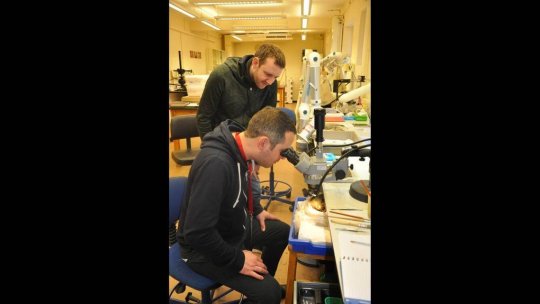
"We found the inspection challenge interesting and valuable when Amgueddfa Cymru — Museum Wales approached us — it was a nice change from inspecting aeroplane parts," Nicholson said. "Using our equipment, we were able to determine that there were coins at various locations in the bag. The coins were so densely packed in the centre of the pot that even our high radiation energies could not penetrate through the entire pot. Nevertheless, we could reveal some of the layout of the coins and confirm it wasn't only the top of the pot where coins had been cached."
The museum soon emptied the pot and found that the coins were mostly in chronological order, with the oldest coins "generally closer to the bottom" of the pot, while the newer coins were "found in the upper layers." The museum was able to estimate that the larger hoard was likely buried in 270 AD.
"The coins in this hoard seem to have been collected over a long period of time. Most appear to have been put in the pot during the reigns of Postumus (AD 260-269) and Victorinus (AD 269-271), but the two bags of silver coins seem to have been collected much earlier during the early decades of the third century AD," said Alastair Willis, the senior curator for Numismatics and the Welsh economy at the museum in the museum's news release.
Both sets of coins were found "close to the remains of a Roman building" that had been excavated in 2013. The building is believed to have been a temple, dating back to the third century, the museum said. The coins may have belonged to a soldier at a nearby fort, the museum suggested.
"The discovery of these hoards supports this suggestion," the museum said. "It is very likely that the hoards were deposited here because of the religious significance of the site, perhaps as votive offerings, or for safe keeping under the protection of the temple's deity.
By Kerry Been.
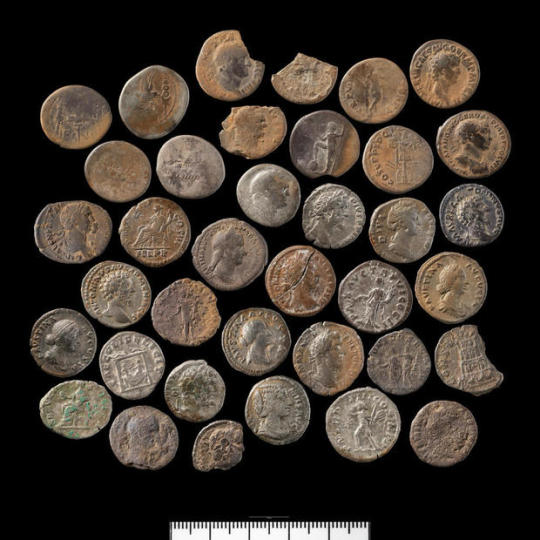
#Discovery of Roman Buried Coins in Wales Declared Treasure#coins#collectable coins#roman coins#metal detecting#ancient artifacts#archeology#archeolgst#history#history news#ancient history#ancient culture#ancient civilizations#roman history#roman empire#roman art
165 notes
·
View notes
Photo

Scientist Accidentally Discovers The Oldest Brain of Any Vertebrate
Paleontologist Matt Friedman was surprised to discover a remarkably detailed 319-million-year-old fish brain fossil while testing out micro-CT scans for a broader project.
"It had all these features, and I said to myself, 'Is this really a brain that I'm looking at?'" says Friedman from University of Michigan.
"So, I zoomed in on that region of the skull to make a second, higher-resolution scan, and it was very clear that that's exactly what it had to be. And it was only because this was such an unambiguous example that we decided to take it further."
Usually, the only remaining traces of such ancient life are from more easily preserved hard parts of animals, like their bones, since soft tissues degrade quickly.
But in this case, a dense mineral, possibly pyrite, seeped in and replaced tissue that had likely been preserved for longer in a low-oxygen environment. This allowed scans to pick up what look like cranial nerve and soft tissue details of the small fish, Coccocephalus wildi....
Read more: https://www.sciencealert.com/scientist-accidentally-discovers-the-oldest-brain-of-any-vertebrate
520 notes
·
View notes
Text
A 1,700-year-old intact egg from Roman Britain shocked experts by its freakish state of preservation when a micro-CT scan revealed it still contained liquid yolk and egg.
77 notes
·
View notes
Link
"It had all these features, and I said to myself, 'Is this really a brain that I'm looking at?'" says Friedman from University of Michigan.
"So, I zoomed in on that region of the skull to make a second, higher-resolution scan, and it was very clear that that's exactly what it had to be. And it was only because this was such an unambiguous example that we decided to take it further."
Usually, the only remaining traces of such ancient life are from more easily preserved hard parts of animals, like their bones, since soft tissues degrade quickly.
But in this case, a dense mineral, possibly pyrite, seeped in and replaced tissue that had likely been preserved for longer in a low-oxygen environment. This allowed scans to pick up what look like cranial nerve and soft tissue details of the small fish, Coccocephalus wildi.
The ancient specimen is the only one of its kind, so despite having been in the hands of researchers since it was first described in 1925, this feature remained hidden as scientists would not risk invasive methods of investigation.
Continue Reading
130 notes
·
View notes
Note
Hey bibliomum this might be a little pressing but you don't need to answer right away if you don't feel up to it. How did you know you had diverticulitis because I may have it.
Ooft, I'm sorry to hear that. If you suspect you have diverticulitis, the best thing you can do is get yourself to the ER for a CT scan because getting treatment for an active infection is vital.
I'm going to throw this under a cut.
The warning signs are intense pain in the abdomen, usually in the lower left quadrant. I experienced radiating pain all the way up into my ribcage, as well as some referral pain in my hip and lower right side as well. Fluctuating between watery stool and feeling constipated is also a major warning sign, as is any blood in the stool.
Any sort of sensitivity to pressure or movement is also a major warning sign.
I foolishly ignored mine for a few days, assuming it was MCAS-related because I've experienced all of the above from MCAS flares before. Turns out that was almost a fatal mistake, and I'd suffered a micro-perforation in my left intestine, so again, if you think you have diverticulitis, get yourself seen as quickly as possible.
Good luck. I hope you recover well.
136 notes
·
View notes
Text
Micro-CT scan of ammonites from Germany 🇩🇪
8 notes
·
View notes
Note
Hey CT, I'm trying to play catchup on patreon stuff I've been missing and wanted to catch up on your drafts. Is there an order you'd suggest for what you have so far or should I just go ham
Just go ham. My strategy lately has basically been writing as a series of short 1000-word micro-essays and then stringing them together
76 notes
·
View notes
Photo
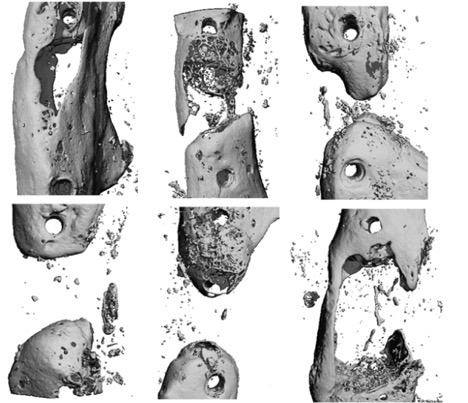
Fractured Relationships
Break a bone and a frenzy of activity ensues to repair it. Bone-forming cells (osteoblasts) and their precursors (osteoprogenitors) take charge. However, fractures don’t always heal well. Consequently, growth factors are sometimes given to promote healing, specifically BMP which promotes bone formation and PDGF-BB which maintains osteoprogenitor numbers. Researchers investigate how they work in a mouse bone fracture model. MicroCT of fractured bones (pictured) revealed that adding high dose BMP, low dose BMP or PDGF-BB (top, left to right) promoted bone regeneration compared with no treatment (bottom left) or combining different BMP doses with PDGF-BB (bottom middle and right). Analysing the cell types revealed that BMP2 alone increased osteoblast and osteoprogenitor numbers but failed to do so when combined with PDGF-BB. While separately BMP2 and PDGF-BB promote bone healing, together they have the opposite effect. Further unpicking their interactions may help advance bone healing treatments.
Written by Lux Fatimathas
Image adapted from work by Sanja Novak and colleagues
Center for Regenerative Medicine and Skeletal Development, UConn Health, Farmington, CT, USA
Image originally published with a Creative Commons Attribution 4.0 International (CC BY 4.0)
Published in npj Regenerative Medicine, January 2023
You can also follow BPoD on Instagram, Twitter and Facebook
8 notes
·
View notes
Text
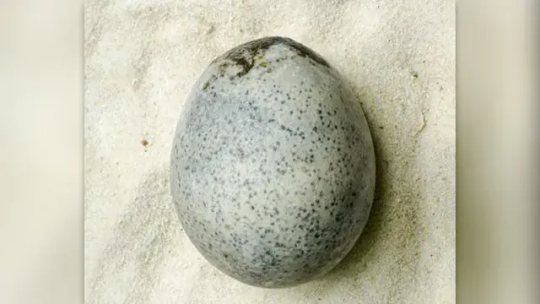
An Unbroken 1,700-year-old Roman Egg Found in England
A three-dimensional scan of a 1,700-year-old egg discovered at a Roman site in England reveals that, eggs-traordinarily, it still has the remains of a yolk and egg white inside.
It's thought to be the only time a centuries-old chicken egg found with its insides preserved.
"We were absolutely blown away when we saw the contents in there, as we might have expected them to have leached out," Edward Biddulph, a senior project manager at the private company Oxford Archaeology, told BBC News.
The egg was one of four found several years ago during an archaeological excavation of a Roman-era site in the central English town of Aylesbury, about 20 miles (30 kilometers) east of Oxford. Three of the fragile eggs fractured as they were unearthed, releasing a "potent stench," but the fourth remained intact.
Now, the surviving egg has been scanned at the University of Kent with microscopic computed tomography (micro-CT), in which many X-ray scans are compiled digitally to make a virtual 3D model. "It produced an amazing image that indicated that the egg, apart from being intact — which is incredible enough — also retained its liquid inside, presumably deriving from the yolk, albumen etc," as well as an air bubble, Biddulph said.

Roman eggs
The eggs were found in a waterlogged pit at the Aylesbury site, which was being excavated by Oxford Archaeology ahead of a housing development. The archaeologists found evidence of habitation there dating back to the Neolithic period, and the pit dated from the third century A.D., when England was a part of the Roman Empire.
According to a statement from Oxford Archaeology, the pit was first used for malting grain and brewing ale, but it was later filled with water and became a place where passersby could throw in coins and other items as offerings to the gods for good luck.
Organic objects usually rot away when exposed to oxygen, but here many were preserved by the waterlogged soil. As well as the eggs, which seem to have been an offering of some sort, the pit contained a wooden basket, leather shoes, and wooden vessels and tools.
Although Roman-era eggshells have been found before — often in graves, where eggs were thought to be suitable offerings — this seems to be the first time a complete Roman-era egg has been found in Britain. The only other Roman-era egg to survive intact was found in the hand of a dead infant buried near the Vatican, according to The History Blog. But it contained no liquids; archaeologists think it represented rebirth after the premature death of the baby.
The Oxford Archaeology statement noted that the Romans often ascribed symbolic meanings to eggs; they were associated with the gods Mithras and Mercury and had connotations of fertility and rebirth.
The intact egg from Aylesbury was taken to the Natural History Museum in London, where experts were consulted about how to conserve it without breaking it. Senior bird curator Douglas Russell told BBC News that the museum had a collection of mummified bird eggs excavated from the catacombs of sacred animals in Egypt that might be older.
"However, this is the oldest unintentionally preserved avian egg I have ever seen," he said. "That makes it fascinating."
The egg is now back at a museum in Aylesbury, where archaeologists are trying to work out how to extract the contents without breaking the shell.
By Tom Metcalfe.

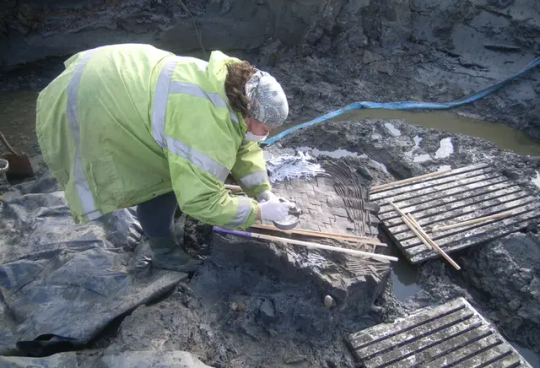
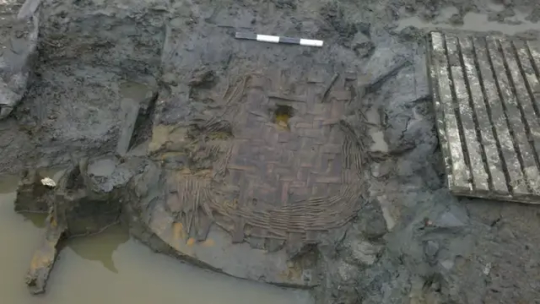
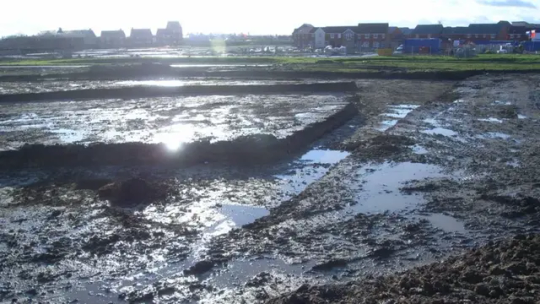
#An Unbroken 1700-year-old Roman Egg Found in England#Aylesbury#ancient artifacts#archeology#archeolgst#history#history news#ancient history#ancient culture#ancient civilizations#roman history#roman empire
36 notes
·
View notes
Text
VERENA SOTO
Here's the lore for my favorite girl! PS I adapted this layout from this post from @glitchinginthegarden for her fantastic profile for Vaye (please head the tags friends!)
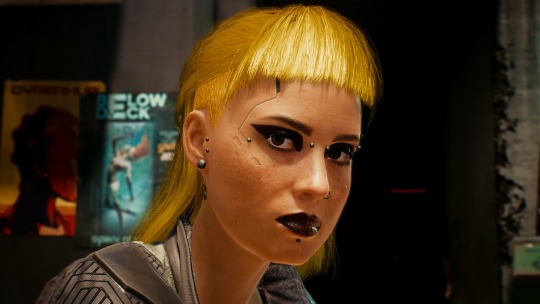
BASICS
AGE: 27 during game
DOB: June 10, 2049
ETHNICITY: American Latina
GENDER: female
PRONOUNS: she/her
SEXUALLY: Queer, uninterested in labels
NICKNAMES: V, Rena (reserved for the people closest to her), Rennie (childhood)
BIRTH PLACE: Wellsprings, Heywood, NC
HEIGHT: 5'6"
WEIGHT: 138 lbs
LANGUAGES SPOKEN: English almost exclusively, some Spanish picked up from around the home
BODY TYPE: Think super featherweight boxer during off-season || ex: Alycia Baumgardner || strong but still has curves and softness. She's still a round-faced queen tho
HAIR COLOR: natural - very dark brown || During her corpo days she keeps it grey as a small form of self-expression, always pulled back into a tight bun. || After Konpeki she wants to feel in control of her body again and dyes it canary yellow and cuts her hair to shoulder length with micro bangs and an undercut. She also shaves both sides to make the shaving Vik had to do to save her life look more intentional. Both the cut and color stick.
EYE COLOR: Kiroshi optics designed to look identical to her natural deep brown eyes.
CYBERWARE: EMP Threading || Biomonitor || Contraceptive Implant || Neural Link || 2 Chip Slots || Interface Plug || Smart Link || Kiroshi Optics Mk. 3 with Chyron and Low Light filter || NetWatch Netdriver Mk.5 Cyberdeck || Kendachi Monowire || Arasaka Syn-Lungs || Self-ICE || Reflex Tuner || Arasaka Cyberleg
CLASS: What I’ve taken to calling the “Buff Netrunner” - mostly relies on combat hacking but will physically fuck you up if you get too close.
WEAPONS: her main weapons are a Tsunami Nue with an XC-10 Alecto Silencer and her monowire || in addition she will often carry a non-silenced tech pistol on gigs, after giving Johnny his Malorian back she takes to using her old Arasaka JKE-X2 Kenshin (he totally gets her a 3516 after everything tho) || On Jobs that look to be messy she will take a Kang Tao G-58 Dian as an insurance policy.
VEHICLES: a Yaiba Kusanagi CT-3X is her daily driver || she also has a Quadra Turbo-R V-Tech for the days ya just need a car || (Johnny's Porsche is returned to him and Jackie’s ARCH is kept in the penthouse and taken out twice a year)
PERSONALITY
|| Extremely guarded, likes to keep her thoughts and feelings private, feels embarrassed when her feelings spill out || Patient to a fault. has the worlds longest fuse to a very big explosion || all icy, calculated fire || slow to trust but once she does, she considers that person to be family || will go to the ends of the earth to protect the people she loves || sarcastic || can be very ridged || highly empathetic, and will try to get people to better situations, regardless of the cost || will lie to get the best possible outcome || loves living in Night City || good with words, has learned to talk her way out of most situations || reserved, hates being approached || feels like here life happens to her a lot and is desperate for control. ||
FAMILY HISTORY
MOTHER: Diana Soto – alive, estranged
FATHER: Mario Soto – alive, estranged
Both of her parents were regular blue-collar workers, he mother is a machinist and her father a welder. They had met in passing as she was dropping off parts at the mechanics shop, he was working at and quickly fell in love, getting married and having Verena not long after.
Her relationship with them was always strained as they were both very closed off with their emotions with her. Because of that and being an only child, she never communicated with them well, eventually closing herself off to them completely.
CHILDHOOD - TEENS
2056 - At the age of 7 the standardized tests given to students flagged her as having an aptitude for netrunning so she was placed in an exclusive boarding school in Charter Hill as part of a special outreach program sponsored by night corp. She excelled at her studies but struggled to make friends as most of her peers were the children of corpos. She spent summers back at home with her parents and seeing the difference in the quality of life had an effect on her, jading her to NC as she aged. Her parents were ecstatic at the thought of their child having a better life than them so failure became something that was severely punished.
2060 - By the time she was in middle school she had a small but close-knit group of friends, both from corps backgrounds and backgrounds similar to her. She was fiercely protective of them and got in multiple fights defending them from the same bullying she had received.
2064 - When not studying she became very interested in edgrunning, specifically solos, but rockerboy culture as well. She liked the inherent rebellion they represented and wished she could do the same. But she knew that she would disappoint her parents if she strayed from the path she was on. So she would listen to records and read about the legends of NC under her blankets at night.
2065 - At 16 she was chipped with her professional ports, she viewed them as the final seal in the life that she was going to live, like it or not. As an act of rebellion, she shaved her head and got multiple ear piercings. She was reprimanded by the school, an action that brought her parent's fists down on her as well. During the summer she would often sneak into clubs and bars to get away from her home environment.
2067 - She graduated with high enough grades that she was able to attend NCU on a full ride where she majored in Cybersecurity with a focus on Offensive Hacking. She looks back on her time there fondly as she met more like-minded people, many of whom pushed her to express herself more. She joined a small band as a guitarist. Eventually entering a relationship with the basest – Sara. It was a very toxic relationship and they both treated each other like shit. V’s generally guarded nature closed her off the deeper in the relationship she got.
20’S
2070 - The unification war caused the university to push its students through faster so she graduated a year early and immediately started looking for a job, not wanting to disappoint her parents.
July 2070 - With Arasaka now back in night city they were doing massive hiring and V managed to get her foot in the door in the Counter Inelegance Division.
August 2070 - Her bosses found her to be adept at espionage so they sent her to do black ops work with a small crew in South America for approximately a year and a half. During this time she honed her skill with a pistol.
October 2072 - leaves to spend 11 months in Rio De Janeiro tracking a “terrorist” cell. Her team eventually took out the group after she was captured on a solo reconnaissance mission and interrogated/tortured for over a week.
September 2073 - Rio really traumatized her and she crawled into herself and didn’t want to return to work so Arasaka wanted to drop her, Jenkins saw her skills as exploitable and invited her to stay in office. During this time she became estranged from her parents.
June 2074 - Meets Jackie at the Mexican border, he saves her ass by helping her extract an agent.
September 2076 - Moves into the Wells household.
Late February / Early March 2077 - Konpeki Plaza Heist.
End of May 2077 - I, Pre Defined Starts
#oc: verena soto#she deserves to have at least one pic of her smiling lol#cw: violence#cw: torture#cw: child abuse#(alluded to)#cyberpunk 2077 canon typical violence#(please let me know if I missed a content warning!)#Did I give her male V's b-day because I needed her to be a Gemini not a Libra? Maybe lol
3 notes
·
View notes
Text
Bioarchaeological and paleogenomic profiling of the unusual Neolithic burial from Grotta di Pietra Sant’Angelo (Calabria, Italy)
Published 24th July 2023
Study of a Neolithic burial with unusual placement at a rather high altitude, far from inhabited areas, lack of funerary equipment and prone deposition of the body found located in Grotta di Pietra Sant’Angelo, Southern Italy.

geographical location, excavation area and skeletal remains from the burial
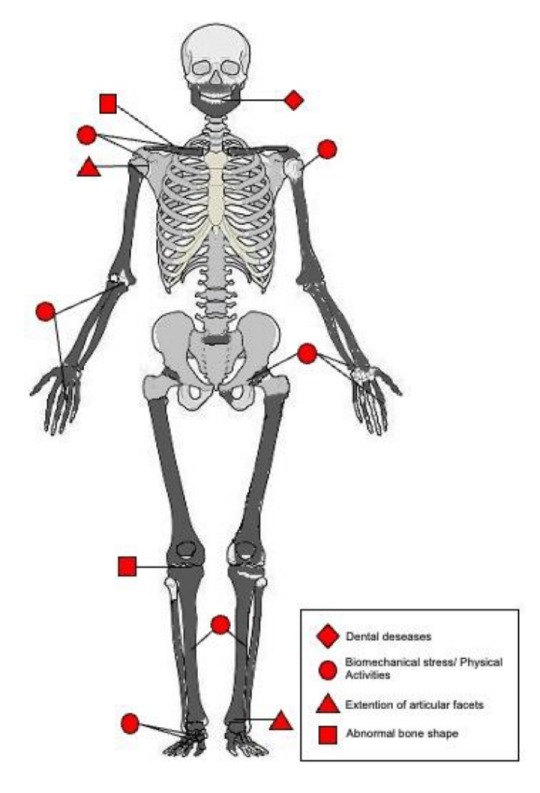
The individual is suspected to be an adult 30 years old male and 164cm tall.
Abnormal bone formation or destruction patterns were observed at the joints. Marginal osteophytes were discovered on the proximal epiphysis of the right ulna and distal epiphysis of the right and left radius as well as on the left acetabulum. Depressed surfaces with smooth edges were observed on the right distal surface of humeral trochlea, on posterior surface of the left and right tarsal navicular bones and on the first proximal phalanx of the right toe. These characteristics are typical of osteochondritis dissecans, a pathological condition.
Extreme wear patterns on the teeth were present represented in loss of crown height in the lower incisors, almost absent dental enamel from the occlusal surface and multiple fractures and chips in their teeth, causing a large reduction in tooth size. alveolar bone. Small amount of calculus on the teeth surfaces were also identified. CT-investigation of the jaw revealed a generalized bone absorption at the alveolar level, indicating a periodontal disease that could have led to the loss of the maxillary second premolar.
It is suggested this individual had a rather active lifestyle/occupation that remained consistent throughout their life.
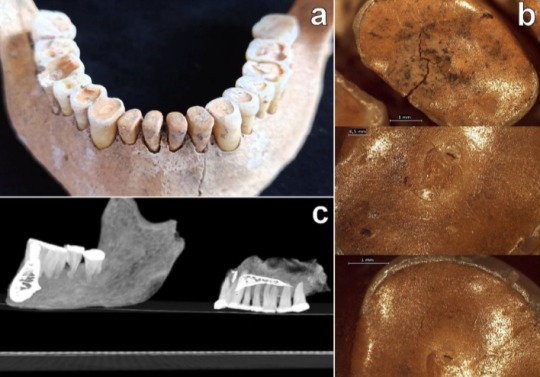
Mandible jaws, stereomicroscopic images of the occlusal surfaces of lower incisors and canines, and CT scan of mandible jaws

Starch granules found in the dental calculus fleck
Microdebris analysis of the dental calculus revealed the presence of a variety poorly preserved microremains, most of which were consistent with plant tissues, starch granules and a trichome. These micro remains were not identifiable to a species or family level. It is hypothesized that these remains indicate the consumption of starchy food and leafy crops and presence of remains such as fibers, mineral grit may have contributed to the dental wear of the individual and could also be associated with occupational activity.
Further study into the dental material of this individual also revealed the presence of several host-associated bacteria, among which are different members of the genera Treponema, Prevotella, Streptococcus and Methanobrevibacter. .etagenomic analysis highlighted the persistence of Treponema denticola, Tannerella forsythia and Porphyromonas gingivalis, known to be strongly associated with periodontal disease and a higher risk of developing esophageal cancer, diabetes mellitus, and are proposed as a risk factor for other several syndromes. More present bacterias of interest include Aggregatibacter, Cardiobacterium, and Eikenella corrodens that could be in rare cases associated with the development of infective endocarditis. The presence of dental pathologies and the detection of amylases are indicative of the consumption of a carbohydrate-rich, typically Neolithic, diet.
DNA was extracted from the molar to test for endogenous DNA persistence and provide a genetic profile of the individual.
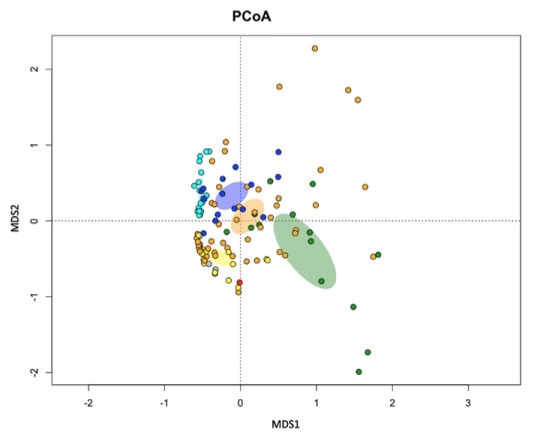
Principal Coordinates Analysis. Male individual (red) and 114 samples from Neanderthal (green), pre-agricultural (orange), Neolithic (yellow), pre-antibiotic period (blue) and modern-day humans (light blue).
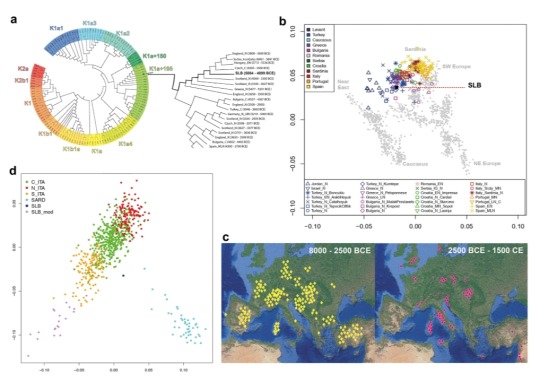
Phylogenetic reconstruction of ancient K-related mitochondrial lineages, PCA projection of individual into the variability of ancient Italian and Mediterranean Neolithics, the distribution of G2a-related Y-chromosome lineages in ancient Europe between 8000 and 2500 BCE and 2500 BCE—1500 CE, individual (blue dot) projected into the variability of modern Italians clusters
Thia genetic data shows that this individual falls into the variability of the Italian and Mediterranean Neolithic, near the Peloponnesian and Anatolian Neolithics.
The cause of the unusual burial of this individual is still undetermined but there are a few suggestions:
Similarities can be found with the infant burial of Grotta di San Michele in Saracena and in the funerary area of the Neolithic village of Favella, indication of relation to their burial tradition and possible place of origin. However, the social meanings that underlie the heterodox funerary behaviour expressed in Grotta di Pietra Sant’Angelo are not certainly known.
The position of the body could be caused due to extreme fraility of this individual, the possible presence of ropes that kept the limbs together, the arrangement of the body with stones could be associated with locking the body in the lying position or the body has been arranged in such a position during the burial (either at a moment close to death or within 24–36 hours of death)
Some of the evidence could suggest the persistence of a non-specific inflammatory state with potentially fatal consequences. The possibility that the individual may have died away from his community would explain the difficult to reach the location of the burial. Despite the lack of a clear funerary equipment, the burial itself could be defined as the expression of carefully planned social behaviour, especially considering the difficulties that arise in accessing the area.
Source:
2 notes
·
View notes
Text

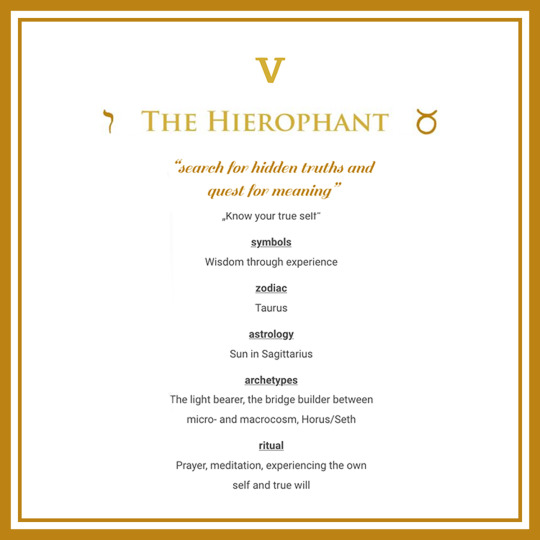
V The Hierophant Conjunction Tarot
“search for hidden truths and quest for meaning”
keyphrase
„Know your true self“
symbols
Wisdom through experience
zodiac
Taurus
astrology
Sun in Sagittarius
archetypes
The light bearer, the bridge builder between micro- and macrocosm, Horus/Seth
ritual
Prayer, meditation, experiencing the own self and true will
Path of Vau: Chokmah – Chesed
Read more here: https://www.conjunction-tarot.com/ct/v-the-hierophant/
#tarot#occult#occultart#tarotcommunity#magick#tarotdecks#alchemy#gnostic#darkart#divination#the hierophant#Hohepriester#Hierophant tarot
2 notes
·
View notes
Photo
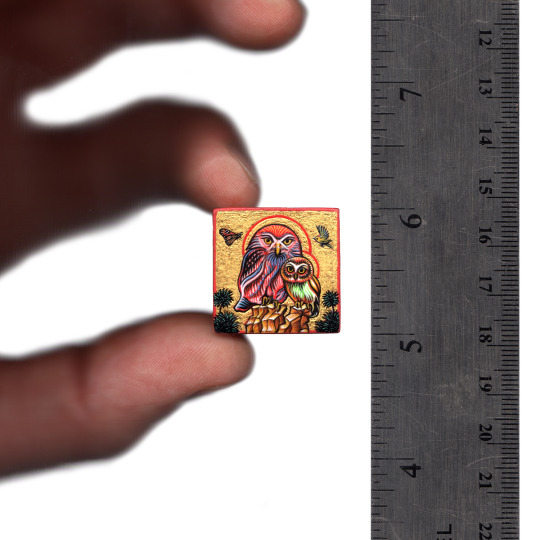
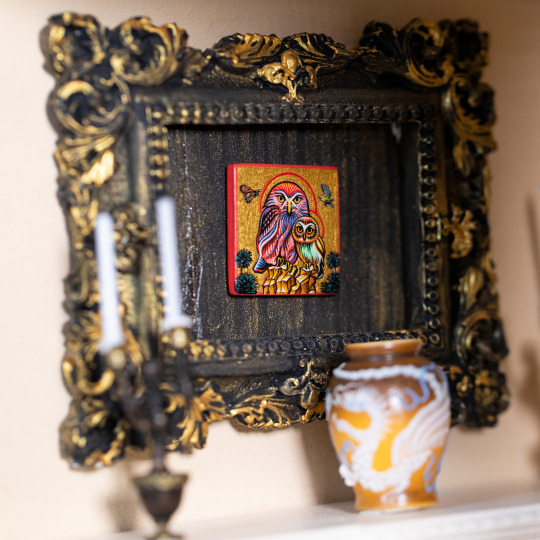

Pygmy Owl Micro Icon - An original 1 in. x 1 in. hand-painted commission for Joanna Strassburg Fisher’s Palazzo Gritti Dollhouse Project. The Dollhouse is a miniature version of the original Venetian palazzo, for which Fisher commissioned a select group of contemporary artists to create miniature works.
“The Fisher Dollhouse: A Venetian Palazzo in Miniature”. First unveiled at the Museum of Arts and Design (MAD - New York, NY), then subsequently exhibited at The Bruce Museum (Greenwich, CT).
Press Release Excerpt: “Peter Gerakaris’s neo-Byzantine icon presented an introspective challenge of recreating an exacting process—painting with a brush of no more than three hairs.” Photos ©Peter D. Gerakaris (except In Situ Photo by Jenna Bascom).
View more about this project and the Artist’s “Icon Series”:
https://www.petergerakaris.com/icon-series
#owl#icon#byzantine art#byzantine#gold leaf#painting#peter gerakaris#Peter D Gerakaris#gerakaris#icon series#miniature#miniature painting
3 notes
·
View notes
Text
#Manufacturer of sim card holder#supplier of sim card series#Wholesaler of sim card adaptor#sim card holder in india#sim card connectors#SIM Card Connector Products#SIM Card Holder#Memory and Sim Connectors#SIM Adapter#Sim Card and SD Card Holder#Memory & SIM Card Connectors#2FF Mini SIM Card Connectors#Memory / SIM Card Connectors#SIM Memory Card Connectors#Nano SIM Connectors#SIM Card Tools & Accessories#Micro SIM Card Holder 9 pin
0 notes